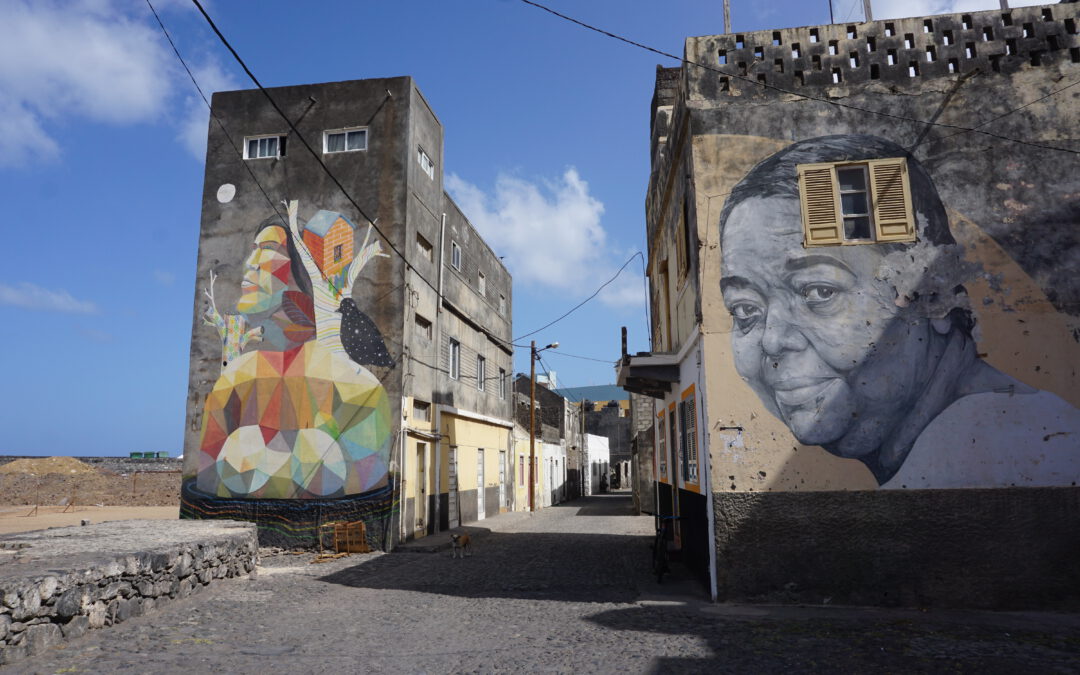In this blog post, I will not only tell you about what we experienced on Cape Verde, but I would like to introduce you to the country and what I was able to learn about it – it’s worth it!
I admit that for me, too, Cape Verde was just a name I had heard before I came here. With a lot of digging in the back corners of my grey cell, I might have remembered that the archipelago belongs to West Africa. But on my journey, which is supposed to take me mainly through Central and South America, Cape Verde was at best a stopover. According to my original plan, I would have preferred to go directly from the Canary Islands to the Caribbean. (In that case, you also head for Cape Verde, but turn off shortly before and let the trade winds blow you over).
For many sailors, however, Cape Verde is a convenient stopover to take a break from the long crossing of the Atlantic, catch their breath, make repairs, stock up on provisions. And when I realised that I could smoke my original schedule through the pipe anyway, the country became interesting for me. I made a conscious decision to rejoin the Baicis family on the boat and make the stopover on Cape Verde with them. In the meantime, the country had aroused my interest: also because I started learning Portuguese at the end of my time in the Canary Islands.
Cape Verde – a mixture of Portuguese and West African influences with lots of music and dance
Before the Cape Verde Islands were discovered by various Portuguese navigators in the mid-15th century, they were uninhabited. Diogo Gomes christened them “Ilhas de Cabo Verde” (Islands of the Green Cape) and began to settle them. I don’t know how he came up with the name, which doesn’t seem very appropriate to me: most of the volcanic islands are more brown than green and there is a cactus growing every few metres. Maybe he was standing on the volcanic crater on the island of Santo Antao, which we also visited when he came up with the name: a lot of vegetables are grown there in the crater and Santo Antao is actually very green – at least in the northwest. The island is also called the Garden of Cape Verde and is located in the far west of the archipelago.
After settling the islands, Portugal quickly began bringing the slave trade to Cape Verde. For several centuries, the country was a stopover for slave transports to America, and over the centuries a culture developed that is on the one hand shaped by Portuguese influences, but has also absorbed much from various West African cultures. Last but not least, there are many parallels to Brazil.
Cape Verde consists of 9 inhabited islands and 16 other small islands and is located about 570 kilometres from the West African coast. The islands are divided into the windward and the leeward islands. We are moored by boat in the town of Mindelo on the island of Sao Vicente, which, like Santo Antao, belongs to the windward islands in the west. Mindelo has the only real marina in Cape Verde, presumably precisely because of its location in the west as a good location for the Atlantic crossing.
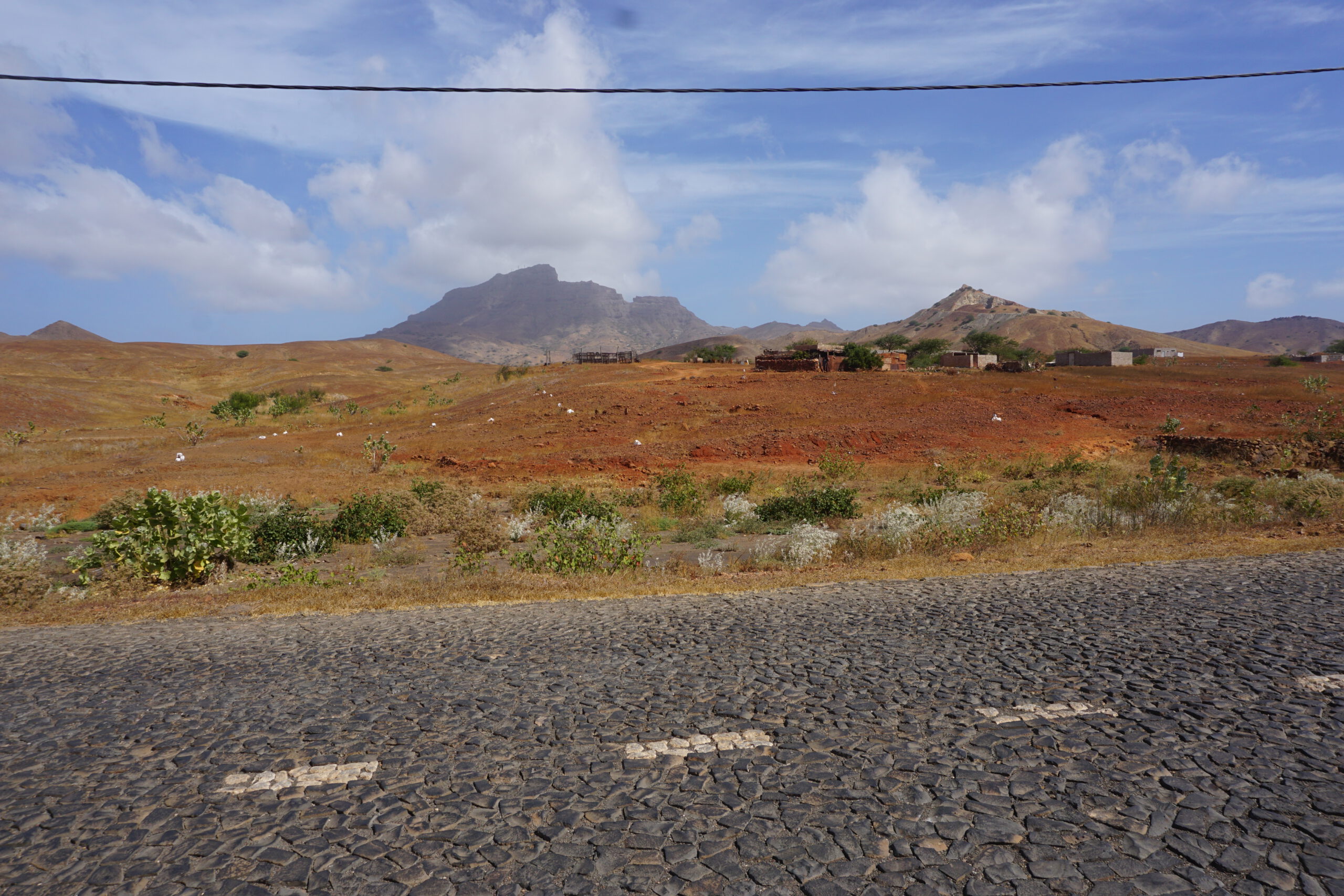
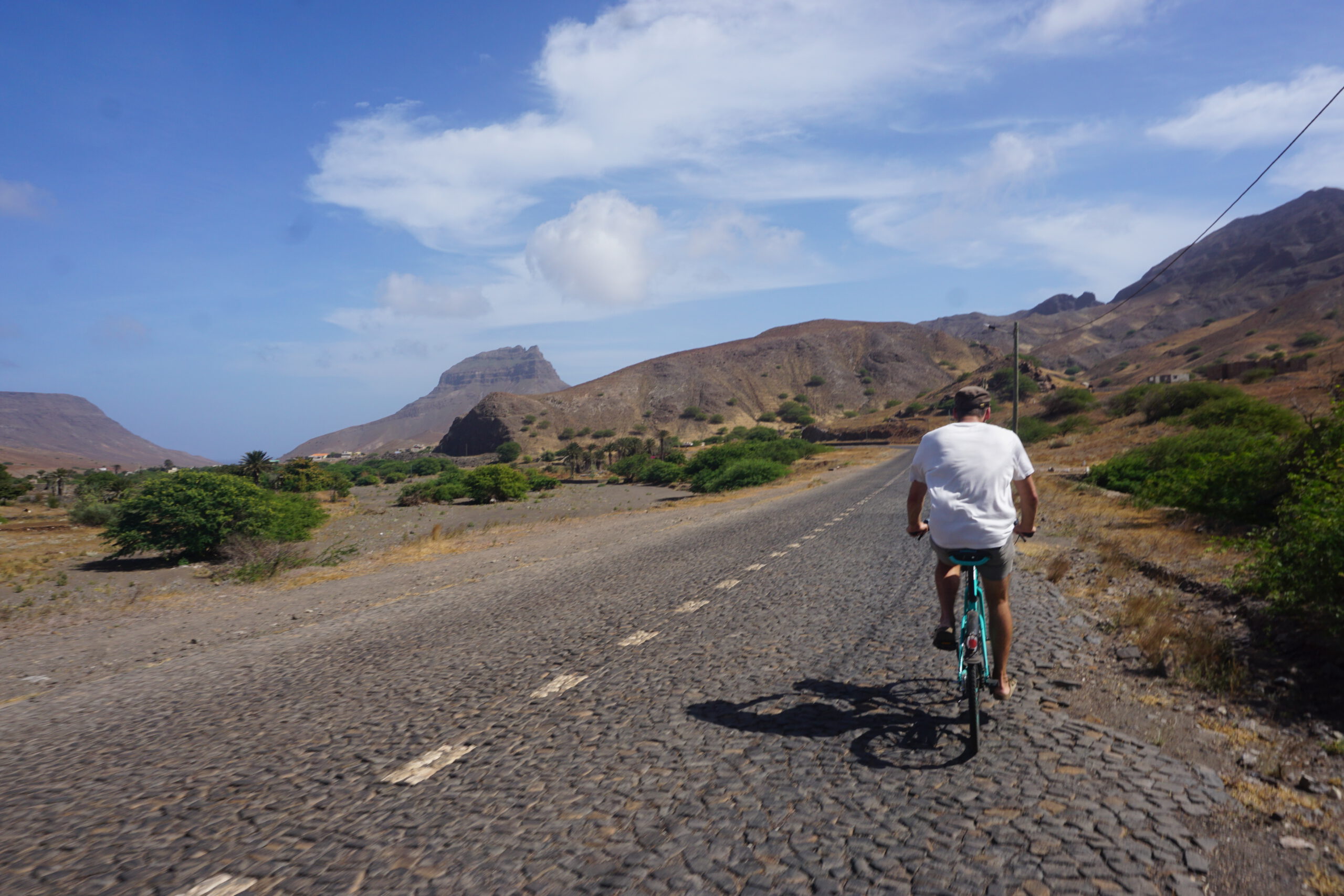

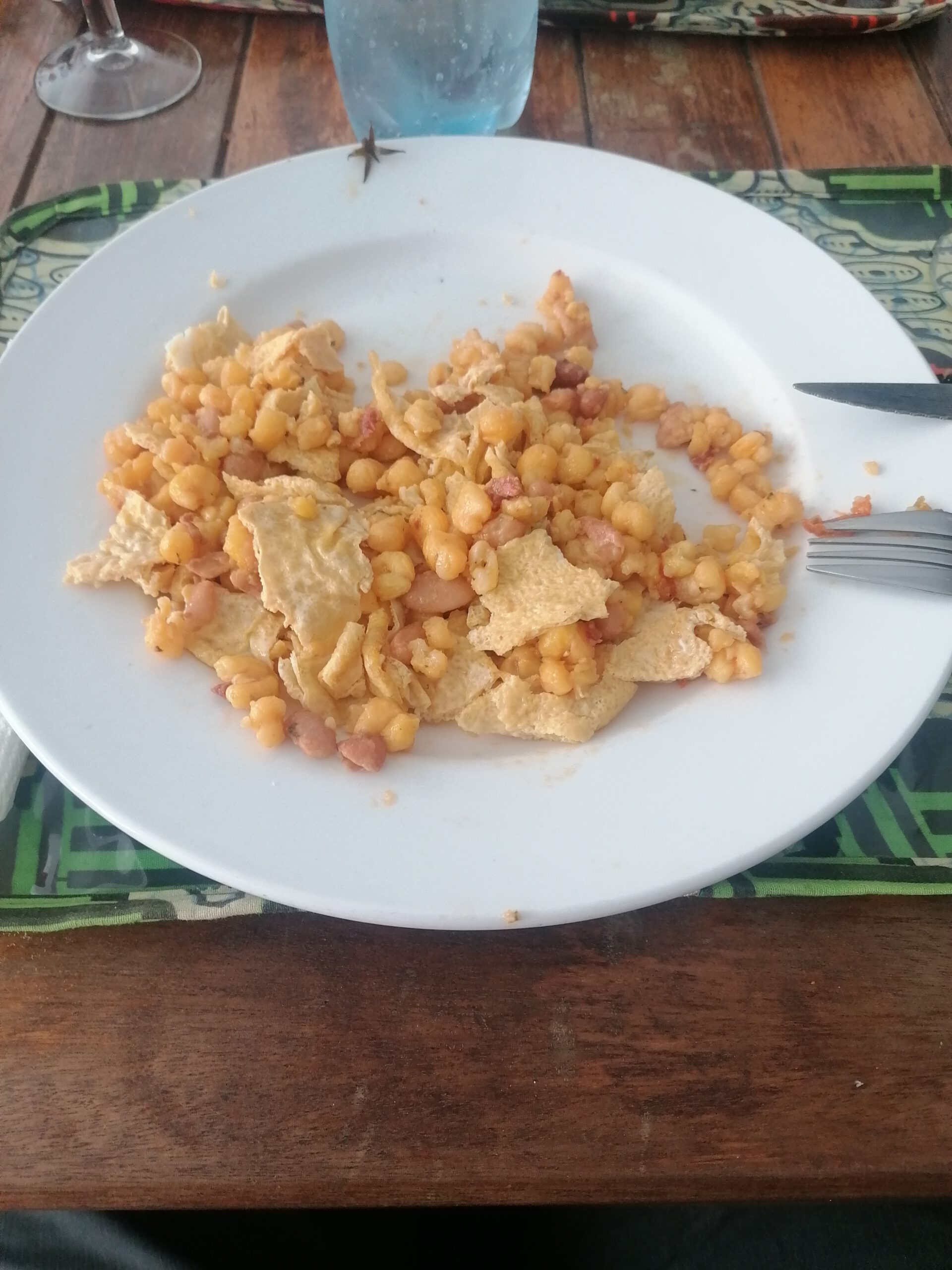
Cesaria Evora and Amilcar Cabral – two ikones in Cap Verde
The country has been independent from Portugal since 1975 and has developed into one of the more stable and prosperous countries in Africa. Nevertheless, poverty is still a big issue here and you are also approached by many people in the street asking you for money or something to eat. About 90% of the food has to be imported, and a large part of the fishing is given to foreign fleets. Tourism is on the rise and now accounts for about 10% of the gross national product.
Probably the most important face of the Cape Verdean independence movement was Amilcar Cabral. As the son of Cape Verdean parents, he grew up first in what is now Guinea-Bissau and later in Cape Verde. After a longer stay and education in Lisbon, he returned to Guinea-Bissau and organised the independence movement of the two countries from the 1960s onwards, which was closely linked not least because of him. After the Portuguese had tried to kill him several times, he was killed in an assassination attempt in 1973 when parts of his own party turned against the strong Cape Verdean influence in Guinea-Bissau. Thus, he himself did not experience Cape Verde’s independence. For 15 years, the West African country was ruled by a de facto one-party dictatorship with failed, bloody coup attempts – until 1990, when a constitutional amendment led to the democratisation of the country and the opposition suddenly got 78%. Before that, it had allegedly achieved 5.5% in every election.
Cape Verde is a parliamentary republic with a directly elected president as head of state. The parliament consists of one chamber with 72 deputies – the German Bundestag should be told that 😀 However, Cape Verde is also very small and has a total population of just under 500,000. The capital Praia is the largest city with 125,000 inhabitants, but Mindelo, the second largest city with 70,000 inhabitants, is considered the cultural centre of the country. Probably also because Cesaria Evora came from Mindelo and ended her life here after her career. The Cape Verdean is considered the founder and most important voice of morna – traditional music on Cap Verde. Morna is played with guitars “cavaquinho” (small four-string guitar), violin and a 10-string guitar. The mood of morna is melancholic, based mainly on poems by Eugénio Tavares’, who is regarded as the founder of Cape Verde’s own literature.
Cesaria Evora comes from a family of musicians and made music all her life in the bars and restaurants of Mindelo. At the age of 47, she got her first record contract and became a world star in no time. She won a Grammy, played world tours and rose to become the undisputed icon of Cape Verde. It is impossible to visit Mindelo without encountering her likeness on every other street corner. I like the music very much. Have a listen, you’ll find it on every major music platform.

Our time in Cap Verde: Music, Turtles, Music, Nature and Music
The importance of music in Cap Verde became clear from the moment we left our boat in the harbour and set out to explore the city! There was loud and soft music everywhere – from loudspeakers or live with instruments and singing. On the very first night, I spontaneously played music in a small bar and everyone started dancing with us. Even though I didn’t play music as much as I did in the Canaries, I still had the guitar in my hand a few times.
Already on the first evening, a rule came up for us that my buddy Arnaud, whom I met again here, came up with: whenever we hear music, we have to follow it and see where it comes from. So we have already discovered many great places and had good encounters.
Probably especially the first evening was so intense because we had been on the water for 8 days before and then suddenly we were thrown into a foreign country with different currency, different food and different culture – a wonderful feeling! Just having different money in your hand, having to get a SIM card and hearing a different language around you was incredibly good! This was the first country outside Europe for me on this trip and I’m really looking forward to the many countries I still have the chance to explore.
So I really enjoyed just wandering around the city, meeting new bars and restaurants, eating sandwiches at street stalls (Jakobs and my favourite was the EI sandwich for 80 cents), chatting Portuguese and listening to music everywhere. Mindelo is truly a colourful, inspiring city that is rightly the cultural centre of the country. By the way, the weather here is very constant – we had about 25° during the day and 20° at night. In the sun it sometimes got very warm, in the evenings I sometimes wore long trousers because of the wind.

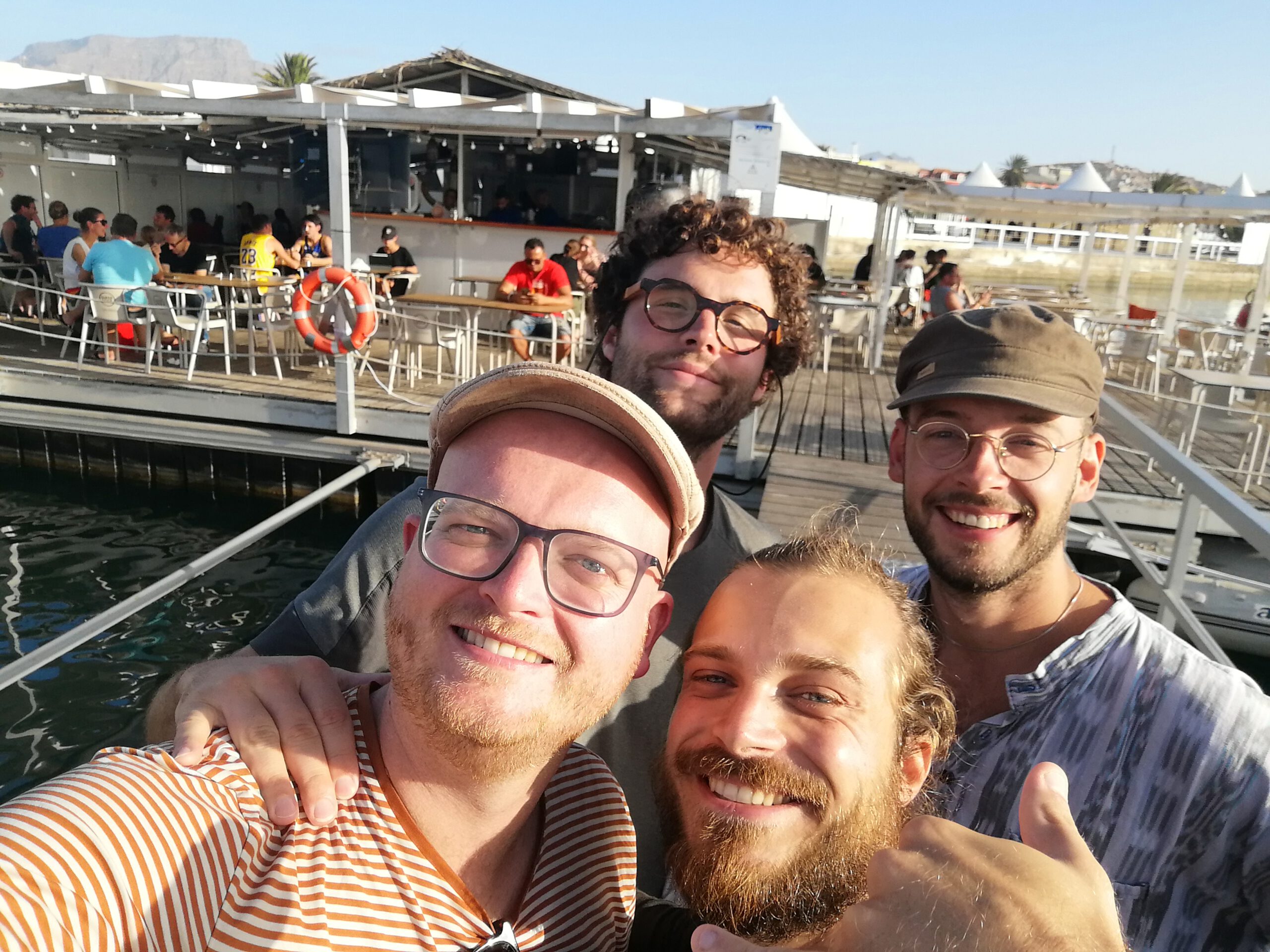
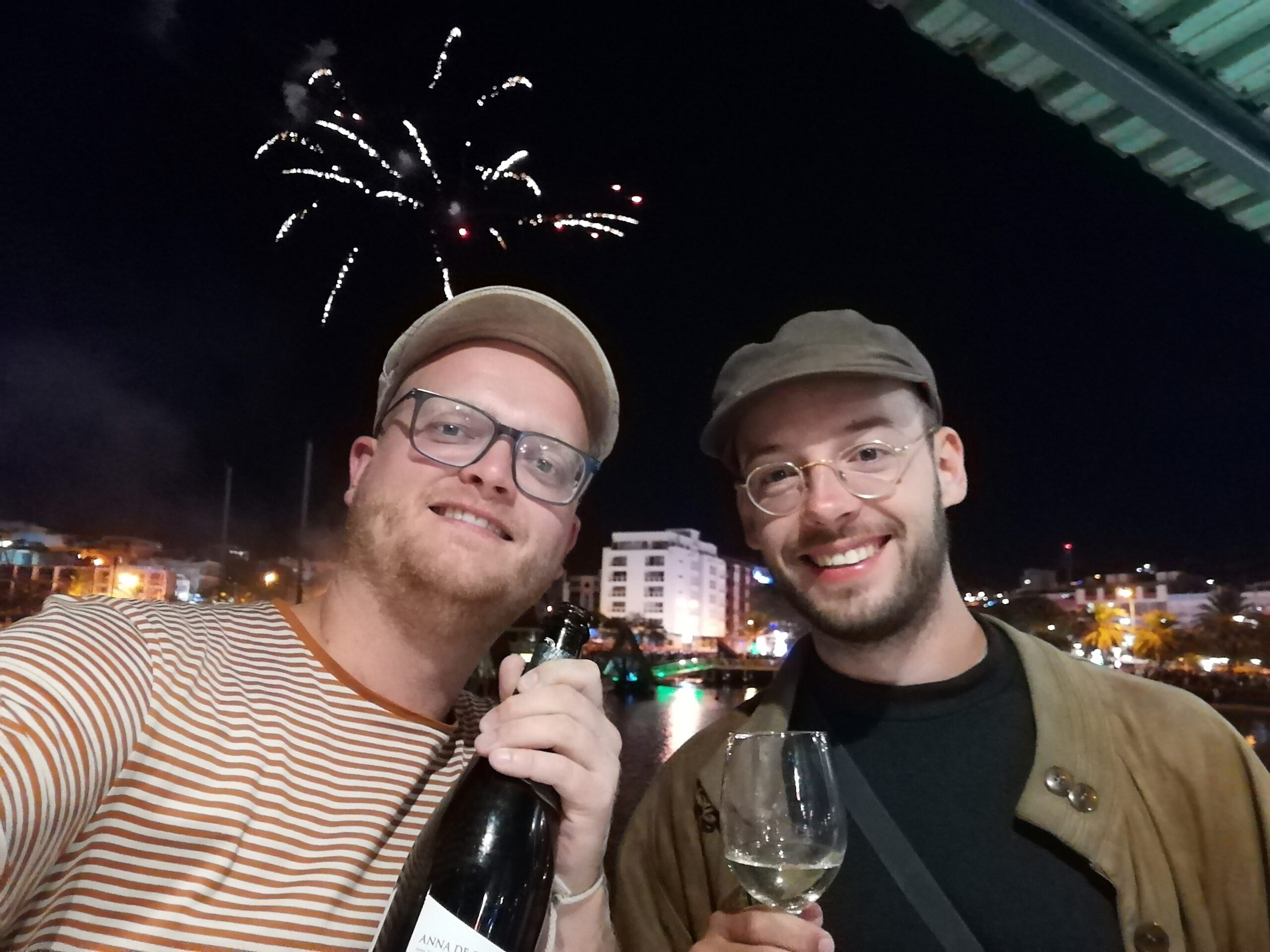
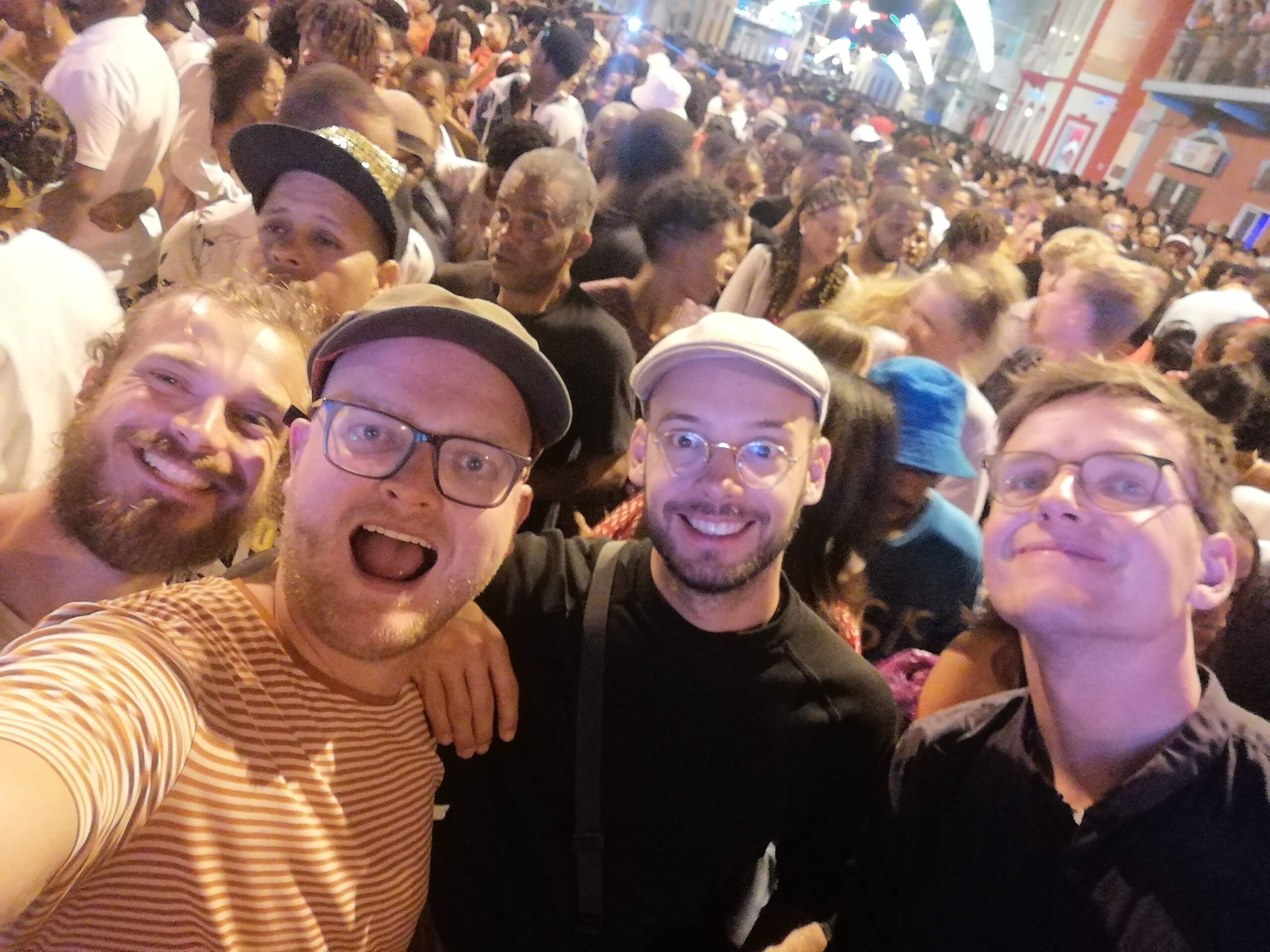
Not only did I meet Arnaud again here, whom I met in Gibraltar and with whom I have already explored Lanzarote and Gran Canaria. I also met many other boat hitchhikers here. Almost every day another boat arrives with someone I know from Gibraltar or Las Palmas. It’s a really great community and it’s always really nice to meet the familiar faces again! So Jakob and I met up with other hitchhikers again and again and always had a good time. Of course we also spent a lot of time with the Baici family and especially with the kids we went on several trips. Twice we went swimming at the beach in Mindelo and splashed around a lot, played and built sand castles.
An absolute highlight was our joint visit to the south of Sao Vicente, to the beach of Sao Pedro: a whole colony of turtles lives there. We were able to go out on a boat and swim with the turtles. At times there were up to 20 turtles around us and they touched us carefully. The animals are simply incredibly majestic and can swim really fast if they want to. Most of the time, however, they don’t want to and swim through the water in a very chilled manner. A fantastic sight that I will never forget!
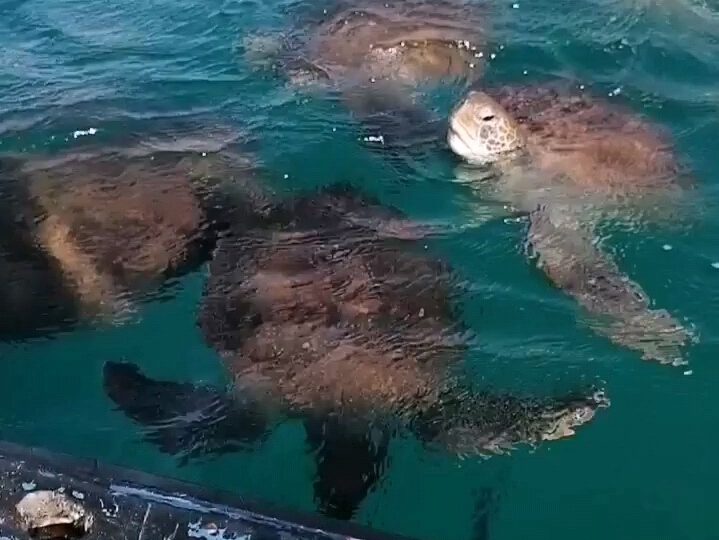

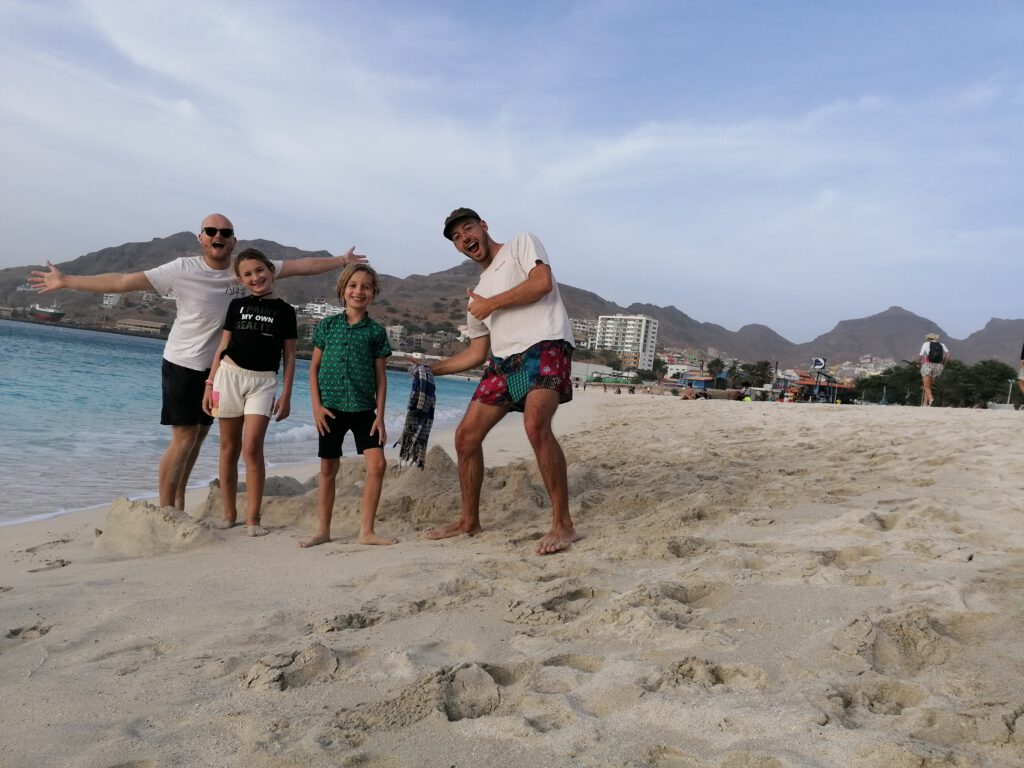
Another highlight for Jakob and me was the visit to the neighbouring island of Santo Antao. As briefly mentioned above, the island is very green in the northwest and it was exactly there that we went on a long hike including an overnight stay in a hammock and tent in the forest. What looked like peanuts lying on the ground at night turned out to be coffee beans the next day – we had set up camp in a small coffee grove 🙂
The next morning we looked at a banana tree so fascinated that the family living next door approached us and invited us for breakfast. In general, the people here are incredibly open, sweet and hospitable! On Santo Antao, when we were hitchhiking, no car drove past us while we were sticking our thumbs out!!!

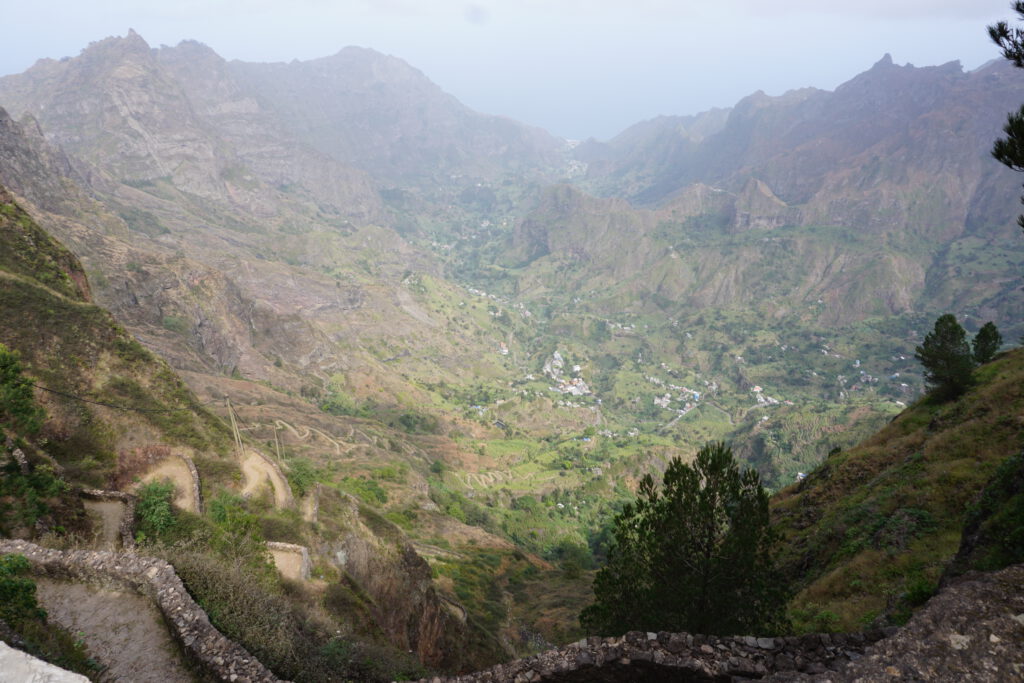
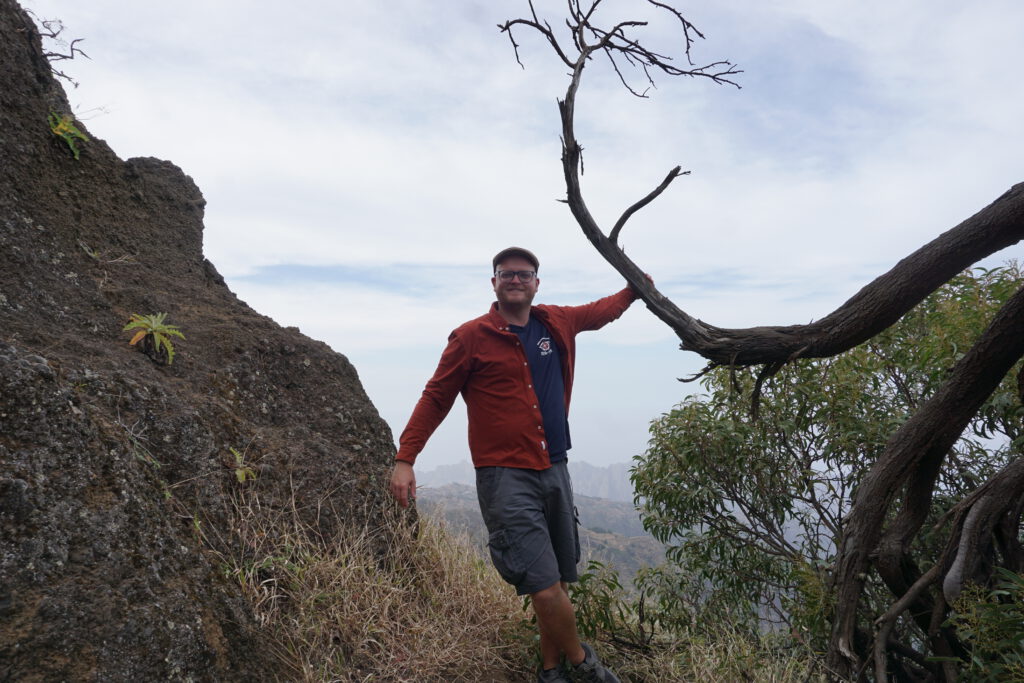

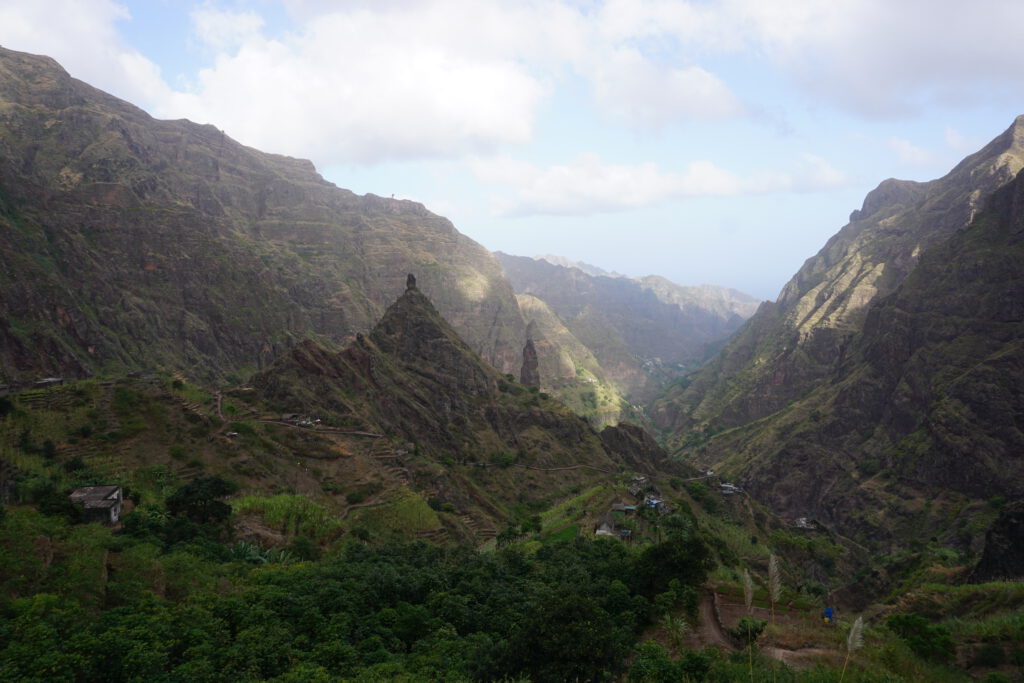
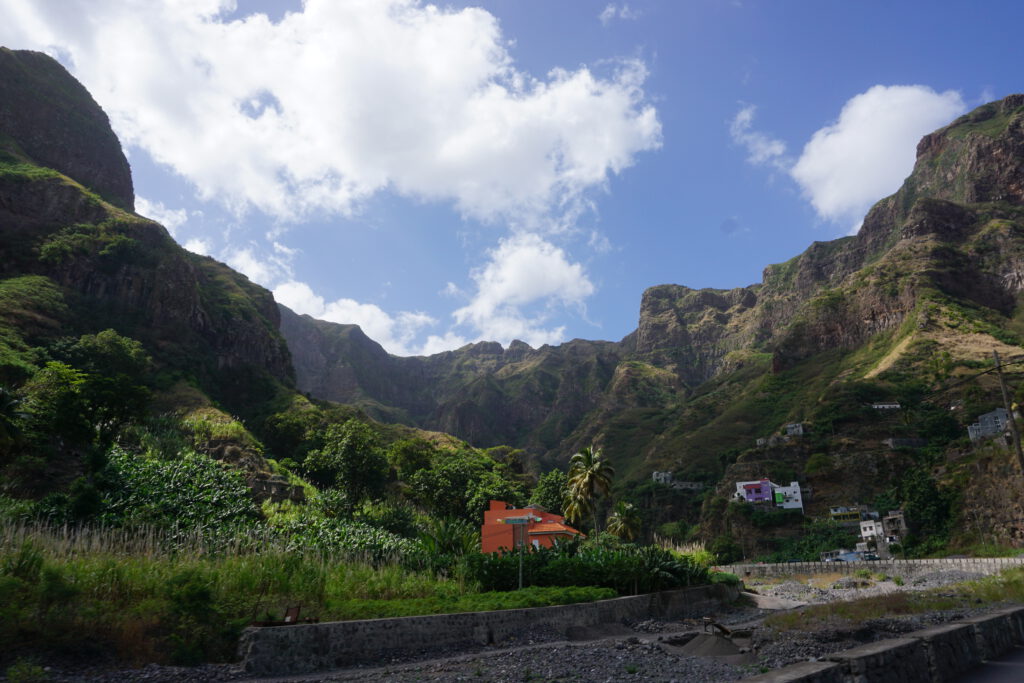


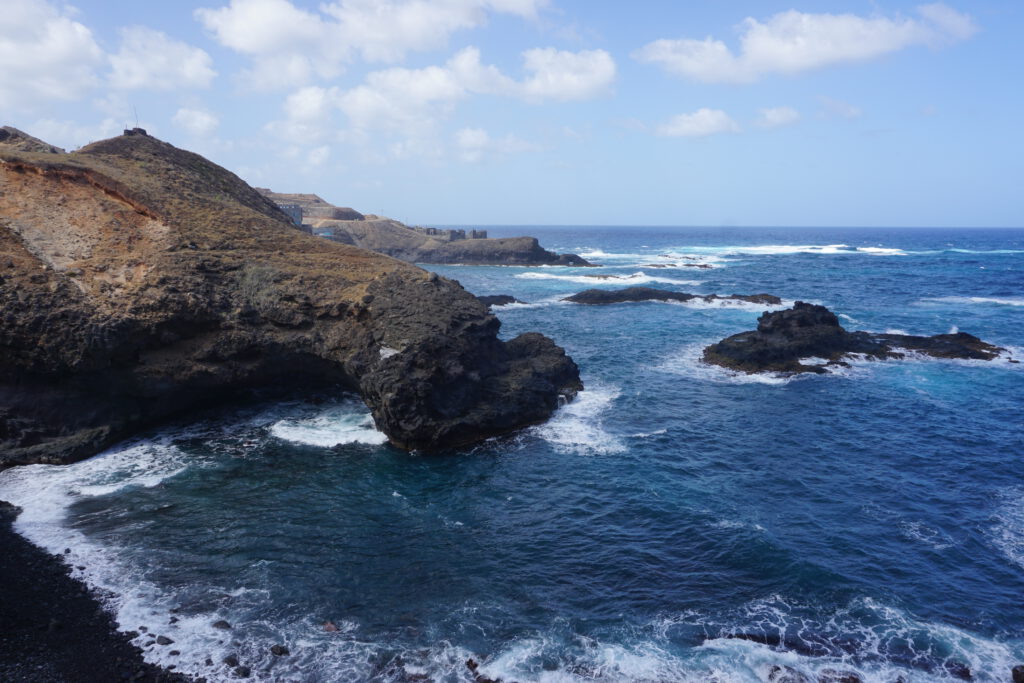

Along the coast we went back to Porto Novo in the east of the island and from there we took the ferry back to Mindelo. On the way, we met a guide from Mindelo who had just been on home leave on Santo Antao: Elvis. Through him I was able to learn a lot about Cape Verde and it was exciting to see how he lives. His mother cooks very well!
I am really happy to have had so much time to get to know this country and to explore the two islands. But now I’m also looking forward to travelling further soon and I’m already excited about which country I’ll tell you about next!

